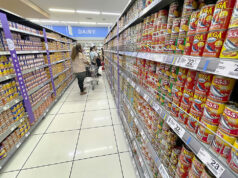ING sees cuts in key rates, reserve requirements
By Melissa Luz T. Lopez, Senior Reporter
SLOWER GROWTH and tighter liquidity will prompt the central bank to stop its tightening cycle, a global bank said, expecting cuts in interest rates as well as bank reserves in 2019.
Nicholas Antonio T. Mapa, senior economist at ING Bank NV-Manila, said he expects the Bangko Sentral ng Pilipinas (BSP) to reduce key rates by 50 basis points (bp) next year plus a 200-bp cut in the reserve requirement ratio (RRR).
Broken down, Mr. Mapa sees a 25-bp rate cut within the second and fourth quarter. Meanwhile, 100-bp cuts in bank reserves are expected in the first quarter and in the third quarter.
However, the bank economist said there are three conditions that need to be met before these adjustments are enforced.
“Possibly by the second quarter, we can see them (BSP) cut the policy rates and on top of it, reserve requirement mainly on three premises: first, inflation has to slow back to within target,” Mr. Mapa said in a media roundtable session yesterday in Makati City.
“We’d also like to see the Fed[eral Reserve] dot plots more dovish than they are right now and lastly, growth is expected to slow down so maybe this gives the BSP a leeway to give the economy a much-needed break.”
The BSP has fired off five consecutive rate hikes since May worth a total of 175 bps, the latest of which a “proactive” move to temper inflation expectations going into 2019. Now, rates range from 4.25-5.25%, with the 4.75% benchmark the highest in nine years.
The series of increases are meant to rein in price pressures, which have been consistently climbing since January until a sharp fall recorded last month.
Inflation has so far averaged 5.2% this year versus the original 2-4% target band, although economic managers said the rate will consistently decline going into 2019.
Higher interest rates are viewed as a growth risk coupled with faster prices increases for basic goods which dampen consumer spending.
Already, household spending has been decelerating so far this year, with growth easing to 5.2% in the third quarter from 5.9% logged in the April-June period.
Mr. Mapa said they expect inflation to ease to 3-3.1% next year, which should “invigorate” business spending and restore some purchasing power among retail shoppers.
These are expected to help stoke the economy, with overall growth expected to ease to 6.1% in 2019 coming from a 6.2% forecast this year. Gross domestic product (GDP) growth has averaged 6.3% as of end-September.
Growth is seen to slump to 5.9% this quarter, which if realized will slump from 6.1% logged in July-September and will be the slowest pace in over three years. This trend is expected to be carried over through the first half of 2019, as a boost from election spending could be cancelled out by a five-month ban on government projects ahead of the May 2019 polls.
“Basically we see growth possibly struggling in the first half (of next year)…,” Mr. Mapa said. “High rates and growth just don’t mix.”
Meanwhile, fresh RRR cuts are projected next year in line with BSP Governor Nestor A. Espenilla, Jr.’s long-term goal of bringing the reserve level down to single digits. The RRR is currently at 18%, down from 20% previously after two cuts which took effect earlier this year. Reducing the mandated bank reserves will free up cash, letting lenders deploy more funds for lending and investments.
Some respite is expected from robust government spending, which has been driving GDP expansion. However, Mr. Mapa said the delayed passage of the 2019 national budget — which is still pending at the Senate just days before the year starts — could push back state disbursements including high-impact infrastructure projects.
“Because consumption is hampered to some extent by higher interest rates and high inflation, we’re counting on government spending to buttress the rest of the economy. If the delay happens, then we can see a subsequent delay in spending,” he added.
Going into 2019, exports are expected to remain a drag while the peso is seen to depreciate further to P54.45 against the greenback as concerns on a wider trade gap weigh down sentiment towards the currency.
The Duterte administration is targeting GDP growth at 6.5-7% this year and at a faster 7-8% in 2019.



